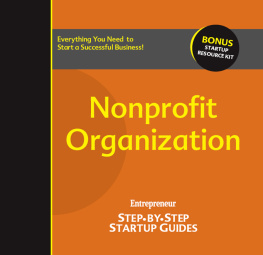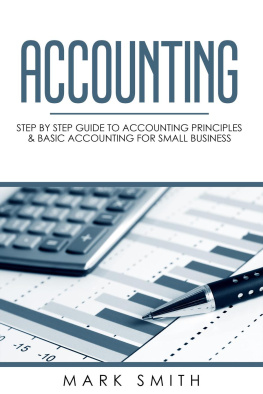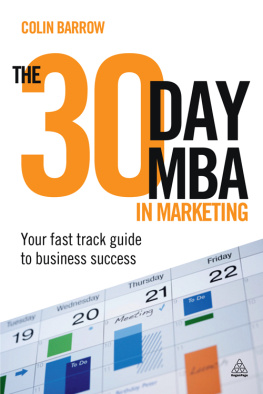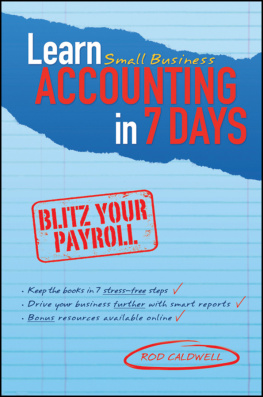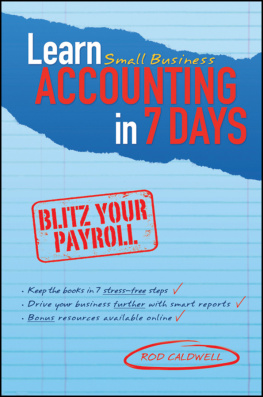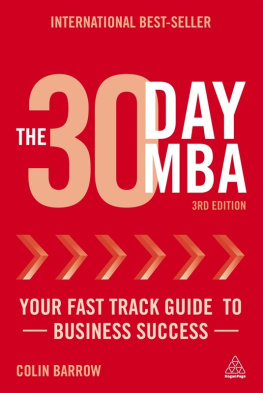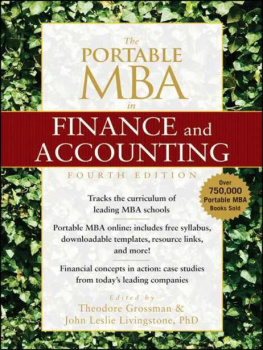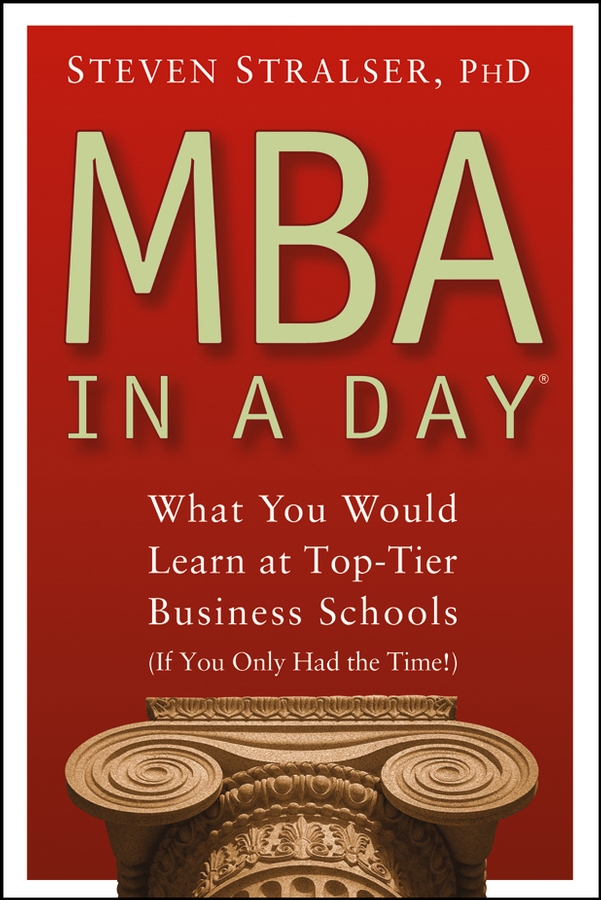About the Author
Steven Stralser received his Ph.D. from the University of Michigan, where he taught marketing and marketing strategy. He holds a BS in marketing from the University of Arizona and an MBA from Arizona State University.
He is currently Clinical Professor and Managing Director of the Global Entrepreneurship Center at Thunderbird: The Garvin School of International Management.
During fall 1999, he was a Fulbright Senior Scholar, teaching marketing management in the MBA program at the Budapest University of Economic Sciences and Entrepreneurship at the University of Miskolc.
His interests outside academe and the professional world include playing left defenseman for his mens adult ice hockey team, driving and just being around vintage sports and touring cars, sharing adventures with his new bride, Rosemary, and enjoying their growing clan of grandchildren.
Acknowledgments
This book would not have been possible without the collaboration and participation by a great team of researchers, writers, and contributors, composed of recent MBA graduates from Thunderbird: The Garvin School of International Management, many of whom I had the privilege of teaching and mentoring at this exceptional school that produces exceptional managers and leaders of global business and enterprise.
Lenora E. Peppers, MBA-IM, the team leader, is managing director of Kick-Start Marketing in Phoenix, Arizona. Arthur Holcombe, MBA, is associate director of the Corporate Executive Board, Washington, D.C. Ronald J. Greene, MBA, is a business analyst living in Phoenix, Arizona. Jaxon Ravens, MBA, is a political consultant in Seattle, Washington. Suchi Patel, MBA, is a strategy consultant in Phoenix, Arizona. Allison Kaiser, MBA, is a marketing strategist for Kick-Start Marketing in the Bay Area, in Northern California. Rachel Neft, MBAIM, is a marketing strategist in Phoenix, Arizona.
I also want to acknowledge the collective great work of my partners in bringing MBA In A Day to publication. To Rick Frishman at Planned Television Arts special thanks for sharing his knowledge of the publishing business, for mentoring me during the process, and for introducing Jane Dystel and Michael Bourret, who well applied his expertise in advancing MBA In A Day into the market. Matthew Holt, Senior Editor, and Tamara Hummel, Michelle Becker, and Mike Onorato, all at John Wiley & Sons, are a top-notch team of publishing professionals to whom I am grateful for their belief in the book and their collective support and energy in making its publication possible.
Finally, I wish to express my thanks and appreciation to some important women in my life: to my new bride, Rosemary, my love and appreciation for signing up for an adventure and for being a great partner as that adventure in life together has been unfolding; to my mother, Janice, whose memory includes teaching me how words and writing are so important; to Deanne, for her love and support; to my sister Carol for always being there with encouragement and love; and to my daughters Amy and Marcyyou have made me so proud of your own achievements both as moms and wives, and as successful professional women!
Chapter 1
Human Resources
The process of recruiting, hiring, and retaining competent employees has always been an important part of any business. In the business world today, this function has become ever more complex and important. The business environment is forever changing, and managers and human resources departments must be flexible enough to adapt to these changes, including the evolving laws, demographics, and business strategies.
HUMAN RESOURCES PLANNING AND STRATEGY
Just like any other aspect of business management, planning and strategy development are the first items on the agenda when tackling a project. Managers, professionals, and entrepreneurs are often faced with the task of developing a plan for how human resources will be needed to meet short- and long-term goals and objectives. For example, a company is interested in expanding its production capacity with a new plant to serve its western U.S. markets. As part of the strategic planning for this new facility, a human resources component of this expansion will be essential.
In its simplest form, human resources planning starts by conducting an analysis of staffing needs throughout the organization. This could mean either assessing the current staffing requirements or projecting future requirements if changes are expected. In either situation there are several questions that need to be answered and fully understood prior to the analysis.
1. What is the organizations strategic vision?
2. What are the short-term and long-term goals?
3. Are there any major changes in the market that will impact the organizations future?
4. What changes in staffing requirements, if any, are needed to support the strategic vision of the organization?
5. If changes are needed within the organization, what type of resistance can be expected to the changes?
Once these questions are answered, assessing the staffing requirements can be completed.
Assessing the staffing plans involves evaluating the human capacity needed to meet the goals and objectives of the organization, estimating the number of people needed for each department or role, and making adjustments as needed. This process does take a lot of experience and understanding of the specific business, but experienced managers should be able to make good assessments. If the managers are new to the industry, a good benchmark would be comparing the number of employees needed in similar organizations.
Signs that the current staffing needs are not in line with the condition of the organization:
- Regular breakdowns in the process flows, which jeopardize relationships with clients and customers. These include missed deadlines, increased returns, decreased customer loyalty, and regular administration mistakes.
- Frequent employee absenteeism and turnover caused by employees being overstressed, having poor morale, or looking for other employment.
- Regularly occurring overtime caused by employees being overworked or given too much responsibility. Overworking employees can lead to burnouts and increased costs in the long run.
Once the staffing plan is developed that meets the current and future plans for the organization, job descriptions can be created. This process involves analyzing each job in the organization in order to generate a job description and job specifications, and then these are aggregated at a company-wide level. Job descriptions can be a very important management tool in some organizations. Some thought should be put into them due to the nature of employees using job descriptions to define and defend their actions or inactions. Job descriptions can be either a restraint or an open door for employees or teams.
The job analysis involves collecting sufficient information to form a complete understanding of what is entailed to perform the job. A job description lists the activities that the employee performs, as well as the skills and qualities that are needed to successfully meet the job objectives. Think of this stage of human resources planning as if you were a newly appointed coach of an expansion football franchise. You would identify first the positions you would need to complete the roster, then the qualities you would like for each player, specific to each position.
Once the job analysis and job descriptions are determined, this information can then be aggregated to form a human resource inventory to track what skills and capabilities need to be filled in to complete the human resources requirements.


